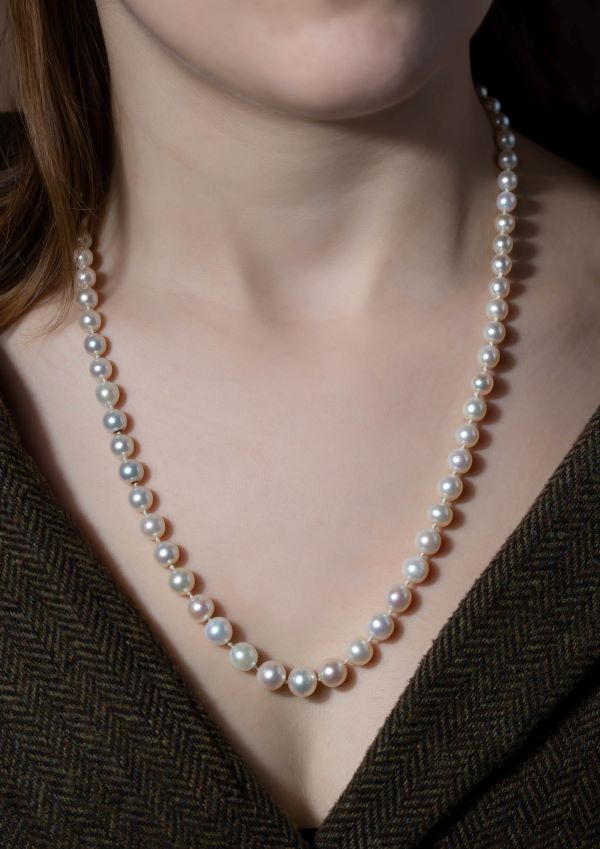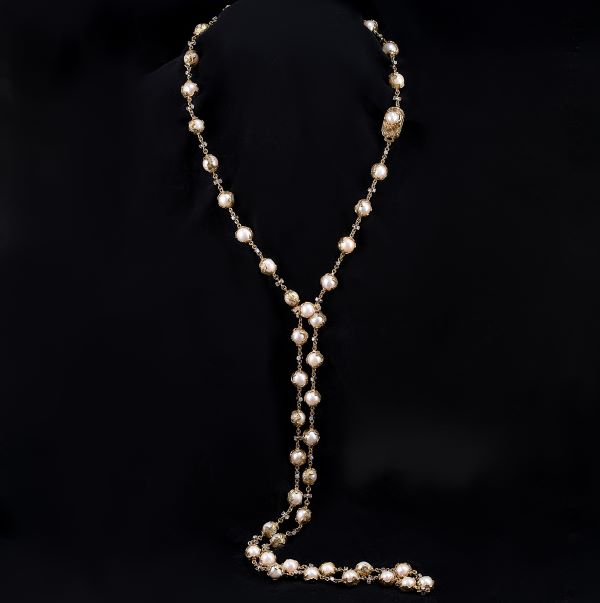Whilst pearls are a timeless classic, they are very much in the fashion spotlight again, having been present on the spring and summer 2024 catwalks. Here, Fay Roach, Jewellery and Watches specialist at Cheffins, explains how pearls are produced and the difference between cultured and natural pearls.
Both cultured and natural pearls are produced by pearl bearing seawater oysters or freshwater mussels. When an external irritant, such as a grain of sand or a parasite enters into an oyster, the animal protects itself by releasing a soothing substance called nacre. A natural pearl is eventually created by this defence mechanism of the oyster. While many oysters are able to produce pearls inside them, it is rare to find one that is large, lustrous, and spherical, so a necklace made up of all natural pearls is extremely rare. Quality factors include: matched in terms of colour, lustre, shape, size, and surface quality.
Saltwater pearls are made up of thinner layers of nacre that form over a longer period of time, therefore they have a much brighter lustre in comparison to natural freshwater pearls that have a much more dull lustre in comparison.
It is believed that 90% of natural saltwater pearls on the market were harvested over 90 years ago. This finite supply and increasing rarity of pearls has caused an explosive price increase in natural pearls over the past few decades. A lovely example Cheffins sold last year is a string of natural saltwater pearls with a diamond set clasp which achieved £58,000.

A string of natural saltwater pearls Cheffins sold in 2023, achieving £58,000.
Cultured pearls, on the other hand, are formed with human assistance. Farmers insert a bead or a small tissue piece as the irritant to encourage the growth of a pearl. Because of this distinction, cultured pearls are much more affordable. Nearly all modern pearl jewellery seen on today’s market is made out of cultured pearls, regardless of whether they are freshwater, Akoya, Tahitian, or South Sea. For example, Charles de Temple became one of London’s most stylish and creative jewellers in the 1960s. His work is recognised by the way he encased individual pearls, amethysts and lapis beads in handmade, organically shaped, textured gold. De Temple is also known as the maker of the original gold finger for the James Bond movie, Goldfinger, and he has made jewellery for other Bond films.

A late 20th century Charles de Temple cultured pearl and diamond necklace going under the hammer at Cheffins on 25th April
Tips on how to look after your pearls:
- Apply hair spray, perfumes, moisturisers etc before putting on pearls.
- Don’t clean your pearls too often as this can remove the natural lustre, just gently wipe them with a lint free cloth
- If cleaning is required, use warm mild soapy water or specialist pearl cleaner.
- Do not wear in the swimming pool or shower as chlorine affects the pearl and submersion in water may affect the silk or adhesives used in the setting.
To view the pearls Cheffins is selling in the Jewellery, Silver and Watches sale on 25th April, please click here.